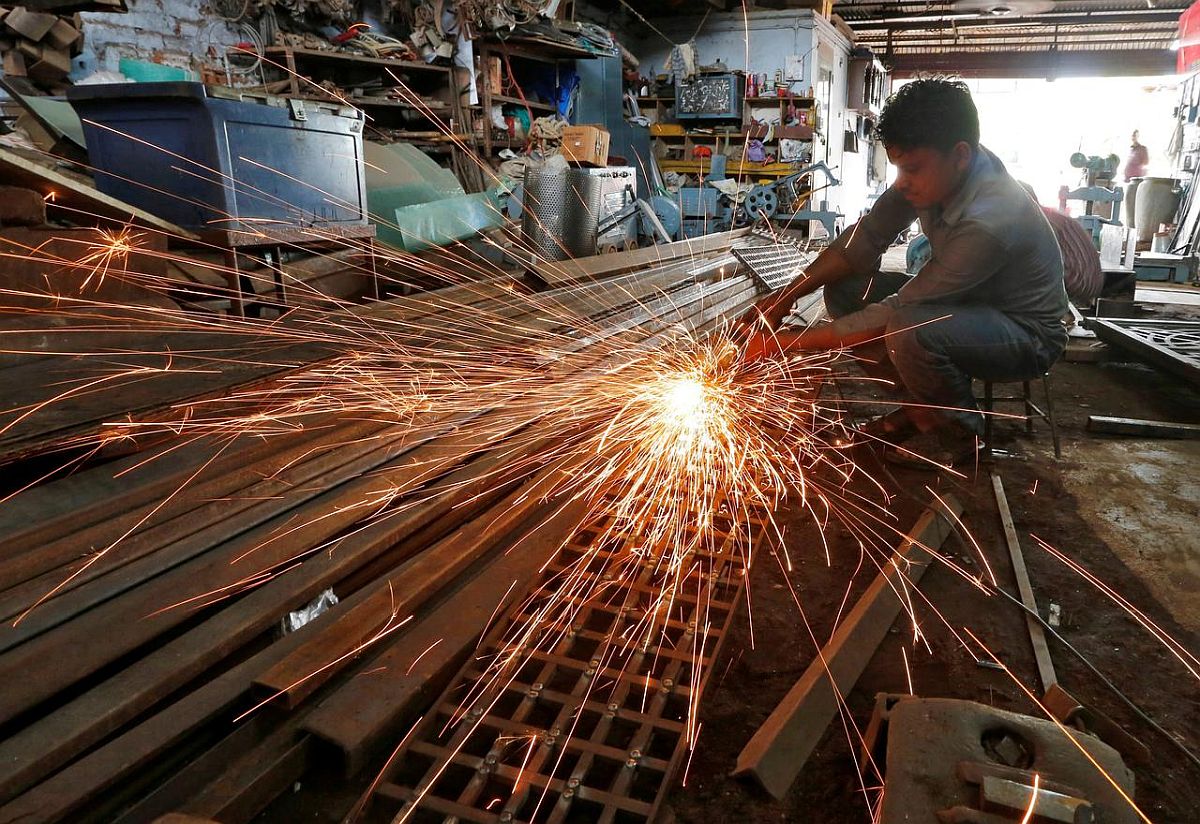Eight of the top 10 employers showed a double-digit growth in fixed capital.
Only one out of 10 showed a double-digit addition in employment.

This illustration was generated using ChatGPT and is intended solely for representational purposes. Any resemblance to real persons, living or dead, is purely coincidental.
Sectors that account for around 70 per cent of the total factory employment showed a double-digit rise in additional investments, but single-digit hiring growth in FY24.
The 10 sectors in terms of factory employment showed a median 12.6 per cent increase in fixed capital, which includes plant and machinery, land and other long-term assets after depreciation; shows an analysis of data by organised manufacturing tracker Annual Survey of Industries (ASI) 2023-24.
The growth in persons engaged in these industries grew at a median rate of 7.8 per cent, showed the numbers released August-end.
The median is the middle of a series of values. It can give a better idea of an indicator than the average which can be skewed by very large or very small numbers.
Nine out of 10 sectors showed higher growth in fixed capital than persons engaged in factory work.
Manufacturing of motor vehicles, trailers and semi-trailers was the only sector which showed faster growth in persons engaged (8.6 per cent) than fixed capital (6.8 per cent).
Textiles showed degrowth in employment even as fixed capital increased.
Overall, fixed capital addition was at its fastest in seven years.
One driver is said to be firms’ preference to invest more in machines than hiring people for production on account of strict labour laws.
Manufacturing is a tradable sector, which leaves companies exposed to global trends and keeping up with them is often required for remaining competitive, said Amit Basole, professor of economics at Azim Premji University.
“Even in labour-intensive industries like apparel, the capital per worker is increasing,” he said.
“It is an irreversible trend. Like in the past, the machine-human ratio will continue to rise unabated.
“It is due to firms’ upgrading to better technologies, and the need emanates from sources like environmental regulations, innovations in machinery, and competitiveness.
“However, if India transitions to a circular economy, manufacturing will also generate labour-intensive processes,” said Bino Paul, professor, School of Management and Labour Studies, the Tata Institute of Social Sciences.
A circular economy involves designing products to be repaired and recycled. This is said to enable job creation.
Local units employ people that can help with such processes even as it reduces pollution involved in the production process in the long term.
The faster growth for fixed capital at an all-India level comes for the second year in a row.
The gap with employment growth had narrowed in the period leading up to the pandemic.
The gap between growth rates of the two (6.3 percentage points) is now at its widest in seven years.
Eight of the top 10 employers showed a double-digit growth in fixed capital.
Only one out of 10 showed a double-digit addition in employment.
The sector with the fastest growth in fixed capital was wearing apparel, up 29.7 per cent year-on-year (Y-o-Y) in 2023-24.
Ironically, the sector with the fastest growth (12.9 per cent) in persons engaged is ‘manufacturing of machinery and equipment.’

Feature Presentation: Ashish Narsale/Rediff




